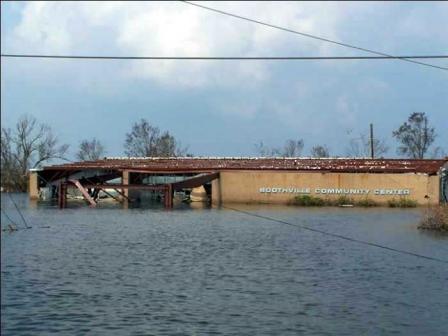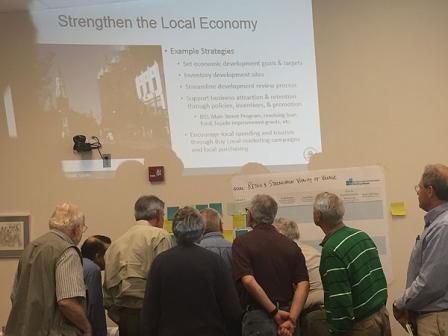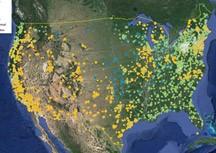EPA Highlights for the Week of August 31, 2015

- Clean Power Plan Protects Low-Income and Minority Communities
- New Tool Helps Rural Communities Assess Smart Growth Opportunities
- EPA Screens 80,000 Sites for Renewable Energy Potential
Clean Power Plan Protects Low-Income and Minority Communities
 Hurricane Katrina is a powerful reminder that low-income and minority communities are the most vulnerable to climate-related impacts.EPA's recently finalized Clean Power Plan will save consumers money and help protect vulnerable communities. The carbon pollution driving climate change comes packaged with other dangerous soot- and smog-forming pollutants that can lead to lung and heart disease. Low-income and minority Americans are more likely to be exposed to higher levels of pollution and more likely to live in the shadow of polluting industries like power plants.
Hurricane Katrina is a powerful reminder that low-income and minority communities are the most vulnerable to climate-related impacts.EPA's recently finalized Clean Power Plan will save consumers money and help protect vulnerable communities. The carbon pollution driving climate change comes packaged with other dangerous soot- and smog-forming pollutants that can lead to lung and heart disease. Low-income and minority Americans are more likely to be exposed to higher levels of pollution and more likely to live in the shadow of polluting industries like power plants.
Under the Clean Power Plan, in 2030 alone, the U.S. will avoid up to 90,000 asthma attacks in children and 300,000 missed days of school and work due to respiratory symptoms — saving families the costs of medical treatment and hospital visits. The health benefits of the Clean Power Plan add up to as much as $34 billion per year in 2030 and beyond.
Read a blog post by Tom Reynolds, Assistant Administrator for Public Affairs, on how EPA is working to protect vulnerable communities from pollution.
New Tool Helps Rural Communities Assess Smart Growth Opportunities
 Local leaders gather for a self-assessment in Damariscotta, ME.Many rural communities across the country face similar challenges in aging populations, lack of quality affordable housing, economic decline, childhood poverty, and depletion of treasured natural landscapes. These rural communities have limited resources and planning capacity to help manage tough growth and development decisions.
Local leaders gather for a self-assessment in Damariscotta, ME.Many rural communities across the country face similar challenges in aging populations, lack of quality affordable housing, economic decline, childhood poverty, and depletion of treasured natural landscapes. These rural communities have limited resources and planning capacity to help manage tough growth and development decisions.
EPA's new tool, the Smart Growth Self-Assessment for Rural Communities, responds to these challenges. The tool helps villages, towns, and small cities evaluate their policies to create healthy, environmentally resilient, and economically robust places. By identifying gaps in policies, plans, codes, and zoning regulations, rural communities are better positioned to tailor solutions that meet their particular needs.
Read a blog post about how this tool is helping rural communities.
EPA Screens 80,000 Sites for Renewable Energy Potential
 Learn which contaminated sites can be returned to productive use with renewable energy.Through the RE-Powering America’s Land Initiative, EPA encourages renewable energy development on current and formerly contaminated lands, landfills, and mine sites that best aligns with the community’s vision. EPA recently updated its RE-Powering Mapper and Screening Tool that provides information about sites to assist local governments and property owners to take advantage of the benefits associated with renewable energy development.
Learn which contaminated sites can be returned to productive use with renewable energy.Through the RE-Powering America’s Land Initiative, EPA encourages renewable energy development on current and formerly contaminated lands, landfills, and mine sites that best aligns with the community’s vision. EPA recently updated its RE-Powering Mapper and Screening Tool that provides information about sites to assist local governments and property owners to take advantage of the benefits associated with renewable energy development.
Pulling from related databases and partnering with state agencies, more than 80,000 sites, comprising 43 million acres, have been evaluated. By collaborating with the Department of Energy, screening criteria have been developed for solar, wind, biomass, and geothermal facilities at various scales.
